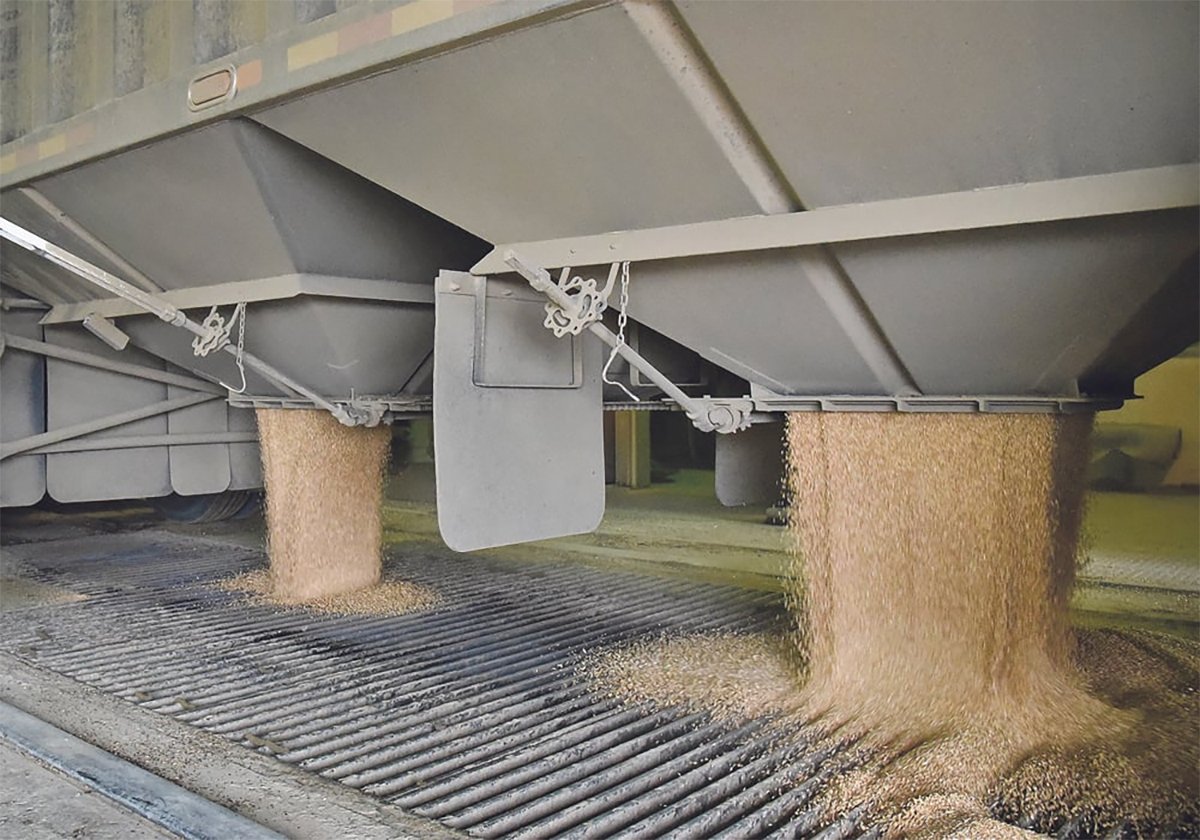Is crude oil just a measure of energy demand? Do rising gold prices just represent inflation fears? Do rising copper prices always mean construction workers are likely to have a busy year? Do falling bond yields signify deflation anxiety? And how do any of those questions provide answers that mean anything for crop prices?
That’s what I talked to Darin Newsom of DTN about yesterday. I’ve been bouncing these questions off a few sage analysts I have spoken with in the past couple of weeks because there are a bunch of weird things happening in the markets – from ags to equities to bonds to currencies – that really shouldn’t – in a textbooky sort of way – be coinciding. So what does it mean? This happened in 2008. Is 2008 happening again? (Remember that incredible year of a sky-high top and crashingly low low?)
Read Also

Worrisome drop in grain prices
Prices had been softening for most of the previous month, but heading into the Labour Day long weekend, the price drops were startling.
See, here’s what’s interesting me: over the past year we’ve had a big commodity market rally, and bond prices have surged. That shouldn’t happen. Why? Because bond prices surge (yields go down) when investors fear deflation or disinflation. Rising commodity prices should connote a future of rising prices and inflation. So bond prices should be going down (yields rising) when commodities are going up. This is especially interesting in the light of gold’s incredible rise, which also tends to be something that reveals inflation fears. People buy gold when they think paper money is becoming more garbagey. And stock markets have been rising. Just this week the S and P rose above the level it had before the Lehmann collapse for the first time. So everything’s uppy. But bond prices should be downy. (Bonds have been dropping since November, but are still well above where they were a year ago.)
We’ve seen crop prices, gold prices, copper prices, stock market values and bond prices all rising over the year – not consistently, but in an overall way. And crude oil appears to be breaking out of its range to the upside. So what does it all mean?
Here’s a summary of what Darin told me, which is mostly stuff I couldn’t cram into a story I wrote for the paper yesterday.
“We are seeing some strange things going on in the financial markets,” Darin said.
“You’ve got some relationships in these markets you don’t normally see, and it’s unlikely they will continue over the long term.”
Bond prices won’t stay as strong if commodity prices keep rising, he thinks. Piddly yields just don’t satisfy investors who aren’t scared, so if the equity market rally continues in 2011, bond prices will likely fall. The past year has been an aberration, he thinks.
Commodity prices could weaken too, he said, if investment money runs back to stock markets and out of hard assets. But ag prices should stay firm, because of very tight ending stocks-to-use levels that may allow the ags to avoid an outflow of investment money into equities.
2008 saw everything rising at once, which is exceptionally unusual. It was an “All the same market” year, to use the phrase of the folks at Elliott Wave International, and in 2008 it represented a mania that couldn’t last. And obviously didn’t. So what does the present crop-commodity-equity market rally signify? Will it end up as badly as ’08?
Darin doesn’t think so. The market has learned to be not so crazy, so rising commodity prices can simply represent real economic growth occurring, and rising stock market prices can simply represent hopefulness and confidence that economic growth will continue. The two don’t have to be opposed. If commodity prices don’t spiral out of control again, then the two classes of investment – commodities and equities – could continue relatively happily together.
How does crude oil play into this? Well, rising crude oil prices can reveal an economy that is growing. But when they grow too fast they can snuff out growth. So what role are they playing now, as they rise towards $100.
It’s more complex now, Darin said. Gold was the gold standard of inflation in the past. Copper was the gauge of industrial demand. But crude has moved into both of those territories in the past five years, and now it is a mixed measure of energy demand, economic confidence and inflation protection. Disentangling those elements is very difficult.
And what about the ags? How independently are they trading? Are they married to the other commodities, or can they stand on their own? Darin said that’s something all traders are watching to see in 2011.
What does it all mean? Perhaps 2011 will give us much of 2008’s upside, but likely not as much of the downside, Darin hopes.















